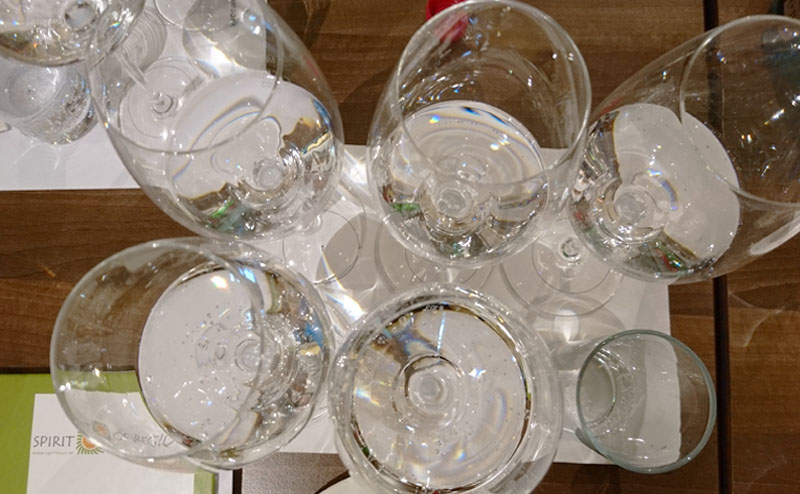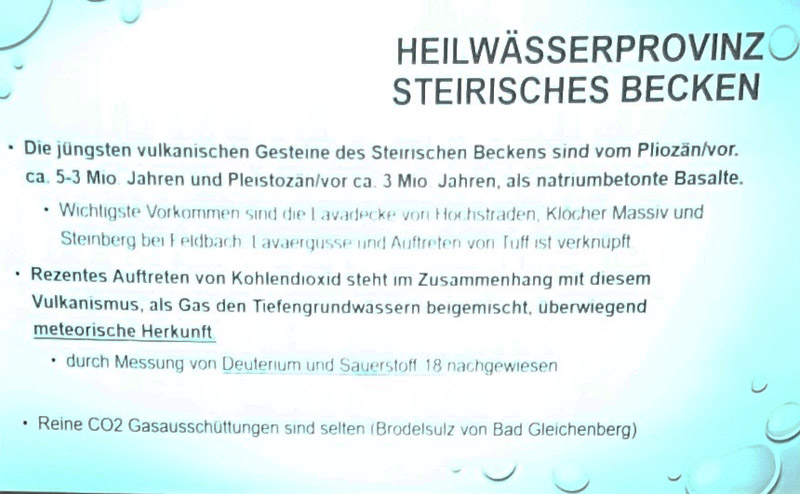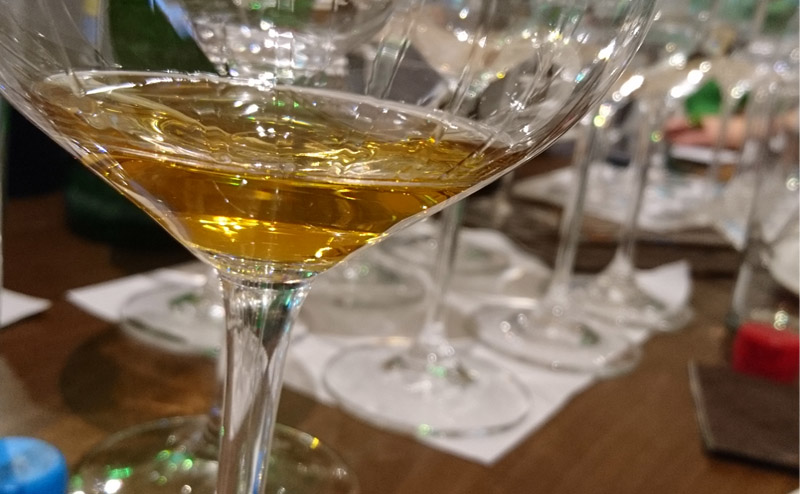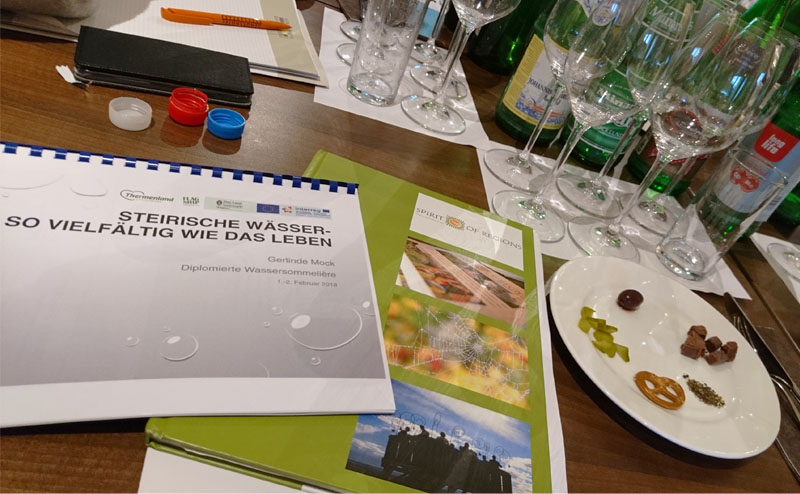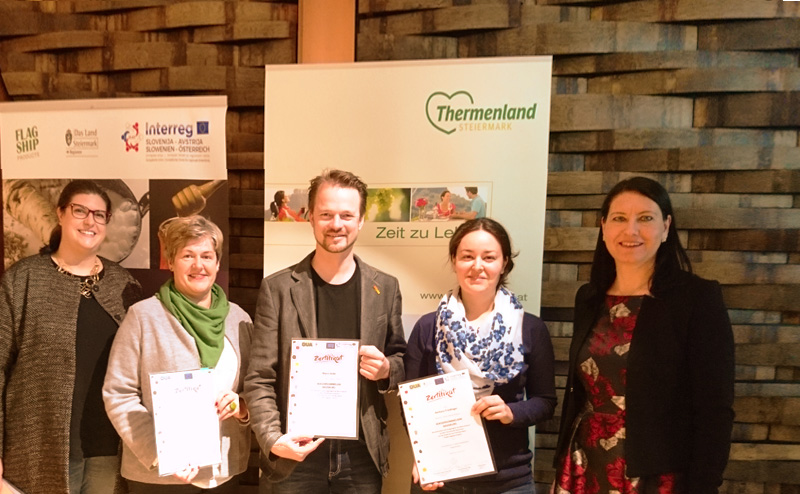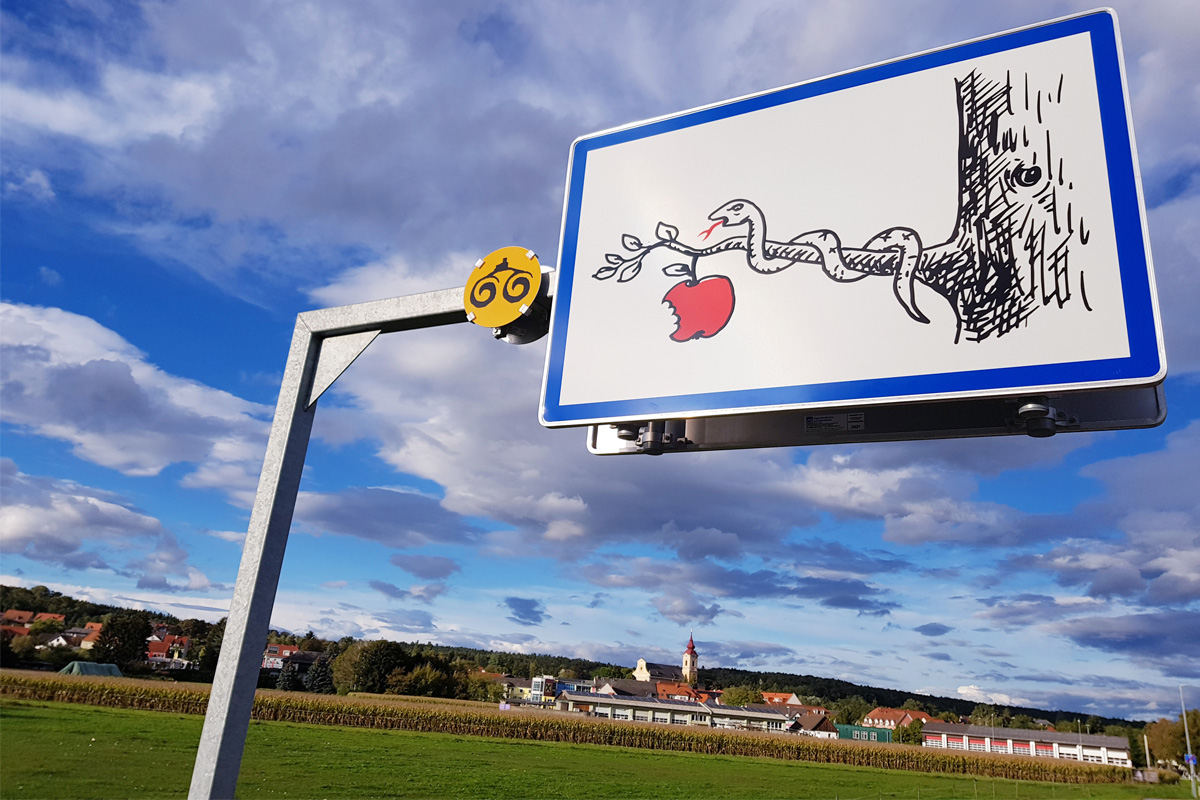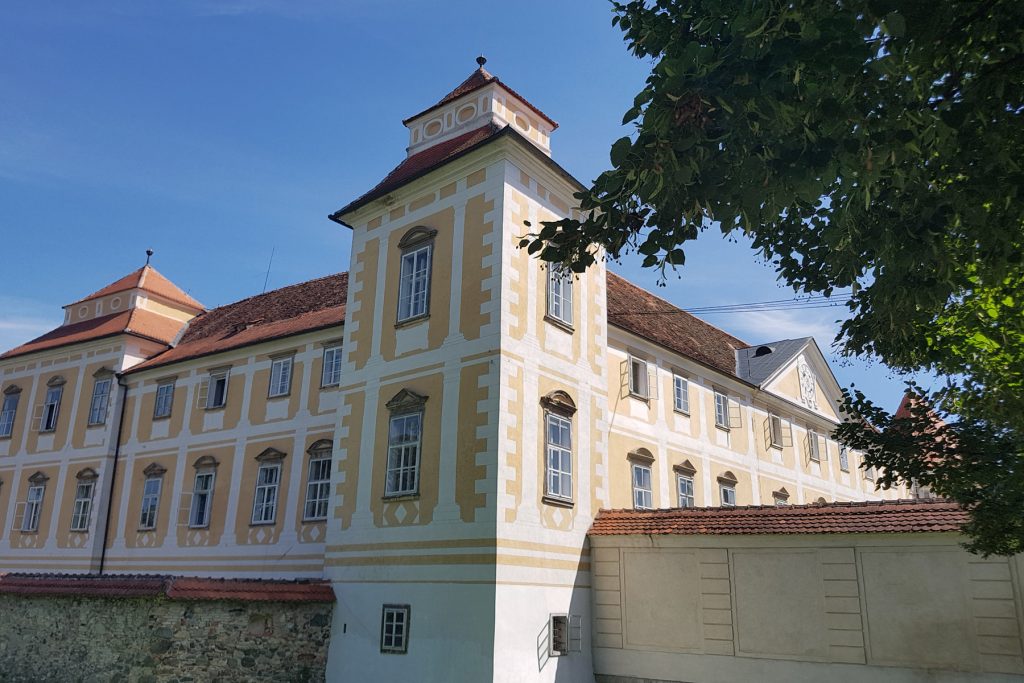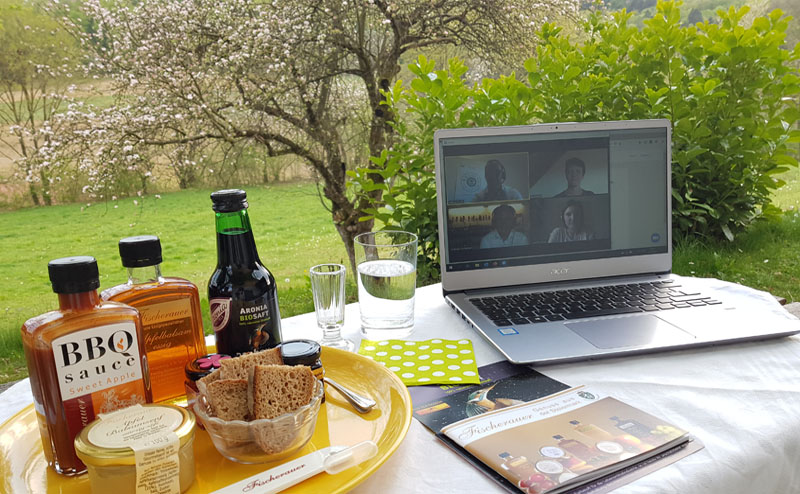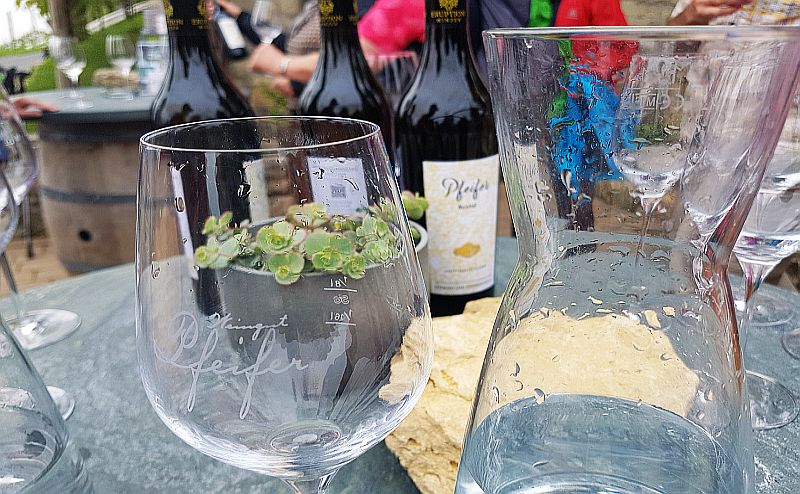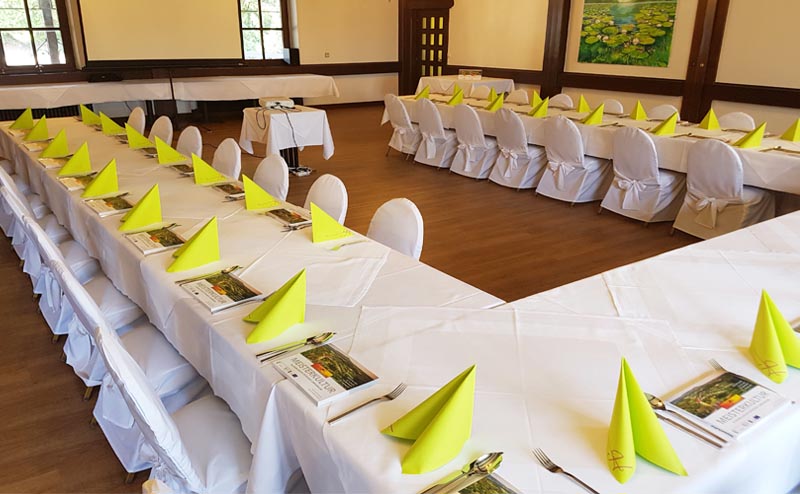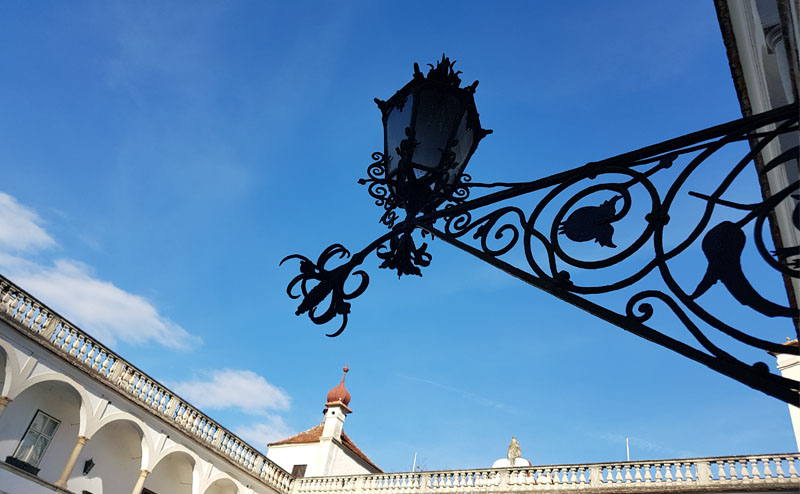The encounter with springs, mineral water points, spas, rivers and rest areas at water points have been used in recent years for tours gladly. Sensitizing words for the element of water and its importance in our soils have been found through the soil charter of the region and the related continuing education offers. “Sulz” is an old name for “Säuerling”. Trees and soil structure play a major role in the water balance of a landscape, and this affects us all. In the cross-border project Flagshipproducts we work on a tourist offer for medicinal and mineral waters of the region and we had the chance for a basic education water sommelier with Mrs. Gerlinde Mock. The graduate sommelier for water suggested the differences between the region’s five major mineral springs. From the genera of drinking, table, healing and mineral water, over terroir and filling vessels to the mineral water types, in particular to those of the Styrian basin and their mineralization.
Bad Gleichenberger Johannisbrunnen, sodium hydrogen carbonate water
Longlife Bad Radkersburg, magnesium calcium hydrogen carbonate water
Sicheldorfer Josefsquelle, iodine-containing sodium hydrogen carbonate water
Peterquelle, sodium calcium hydrogen carbonate water
Rosenbergquelle, calcium sodium hydrogen carbonate water
The taste of mineralization and its uses for our body and in the tourist area in the gastronomy were the second part of the seminar. Rated as in a classic wine tasting after visual impression, smell, taste and the personal conclusion with texture, body, finale in combination with wine, whiskey, coffee, cheese, cocktail. It is fun with this knowledge to describe the regional waters with appropriate words and to add value during drinking breaks. Color, sound, viscosity, … Thanks to Mrs. Belinda Schagerl and Nicole Prem from Thermenland Styria for the further education offer on the doorstep.



